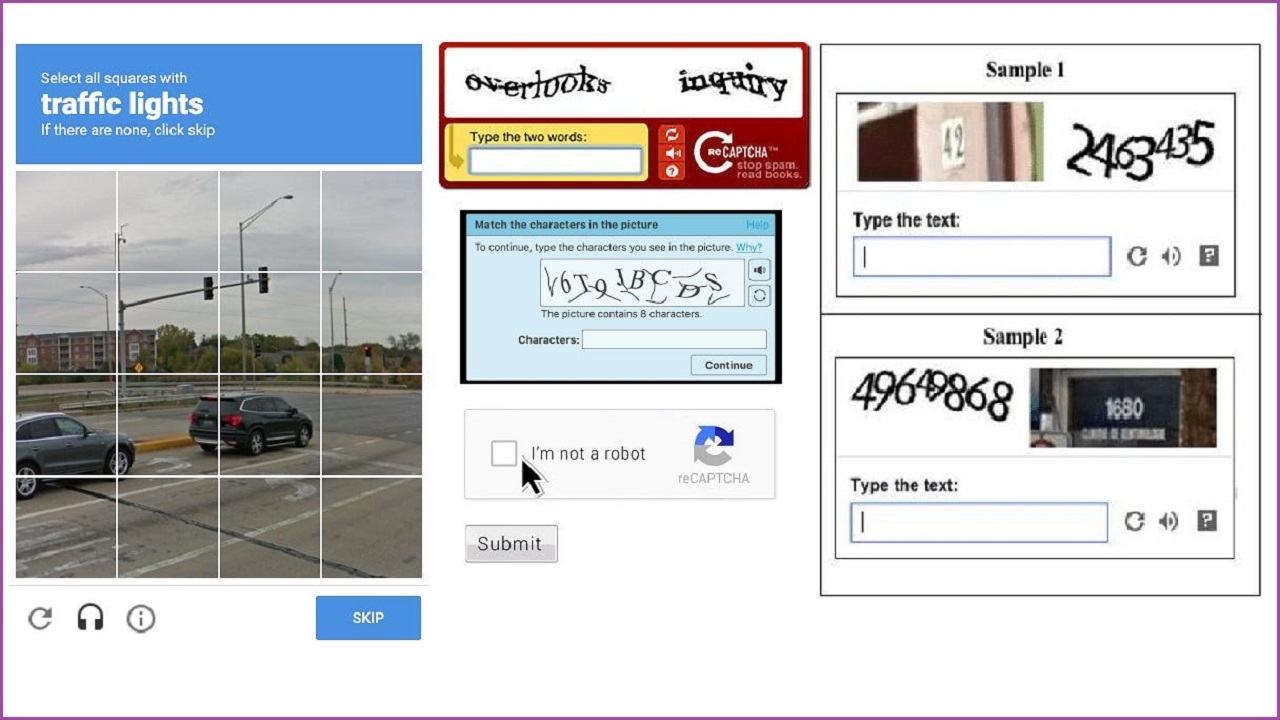CAPTCHA: A Turing Test in the Age of Intelligent Bots
Context
In recent cyber incidents, threat actors have been using fake CAPTCHA windows to deploy the Legion-Loader malware. This malware ultimately installs malicious browser extensions to steal sensitive user data.
This highlights the need to understand the evolution, functioning, and limitations of CAPTCHA systems in the digital age.
What is CAPTCHA?
-
CAPTCHA stands for Completely Automated Public Turing test to tell Computers and Humans Apart.
-
It is a cybersecurity tool designed to distinguish humans from bots by presenting tasks that are easy for humans but difficult for automated programs.
-
Introduced in the early 2000s; the first patent was filed by Luis von Ahn and his team in 2003.
-
Commonly used to protect websites from:
-
Spam submissions
-
Automated attacks
-
Credential stuffing
-
Data scraping
-
Evolution of CAPTCHA
-
Initial Phase:
-
Used distorted letters and numbers.
-
Users had to type the correct characters shown in a distorted image.
-
-
reCAPTCHA (2009):
-
Introduced by Google.
-
Used scanned book texts to help digitize printed content.
-
-
Invisible reCAPTCHA (2014):
-
Relied on behavioral signals (e.g., mouse movements, click patterns).
-
Reduced user friction by not requiring direct interaction.
-
-
Modern CAPTCHAs:
-
Include image selection tasks, sliding puzzles, and activity recognition.
-
Use AI and behavioral analysis for passive verification.
-
Working Mechanism
-
CAPTCHA is inspired by the Turing Test proposed by Alan Turing in 1950.
-
The test checks whether a machine can mimic human intelligence convincingly.
-
CAPTCHA exploits the gap between human cognition and machine learning to differentiate humans from bots.
Limitations of CAPTCHA
-
AI Advancements:
-
Machine learning algorithms have improved bots’ ability to solve CAPTCHA challenges.
-
-
Accessibility Concerns:
-
Difficult for people with visual, auditory, or cognitive impairments.
-
Can hinder inclusive digital access.
-
-
User Experience:
-
Poorly designed CAPTCHAs lead to user frustration and may reduce website engagement.
-
Way Forward
-
Adaptive Security:
-
CAPTCHA systems should become risk-aware and adjust difficulty based on threat levels.
-
-
Inclusive Design:
-
Develop multimodal CAPTCHAs (audio, visual, touch) to accommodate diverse users.
-
-
Behavioral Analysis:
-
Rely more on passive techniques like mouse movement, typing rhythm, and user interaction flow.
-
-
Integrated Approach:
-
Combine CAPTCHA with multi-factor authentication (MFA) and risk-based authentication for stronger protection.
-




Comments (0)